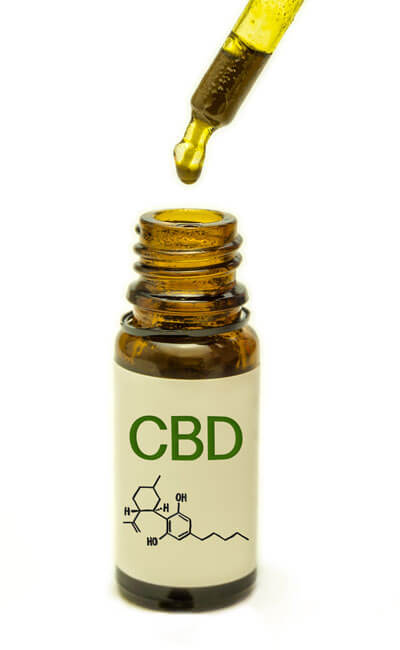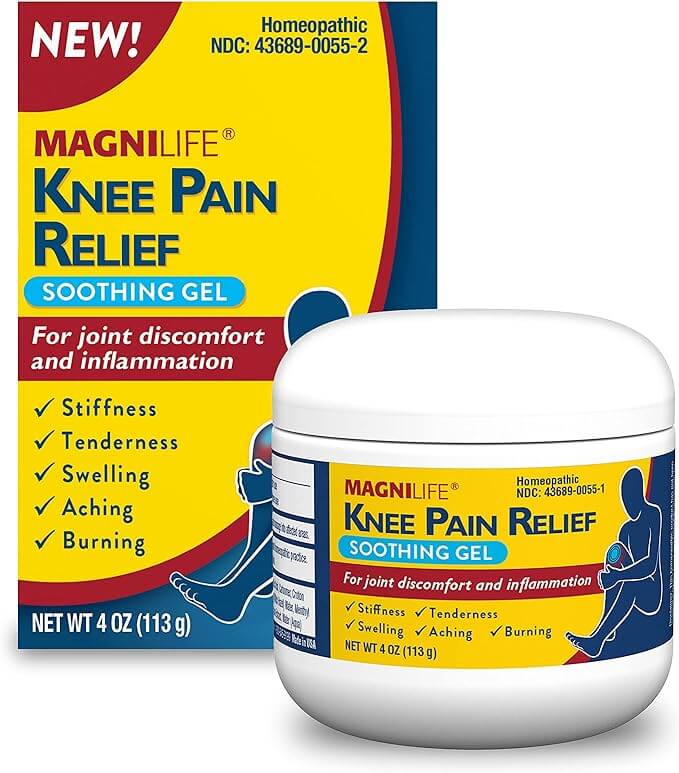Arthritis, a debilitating condition that affects millions of people worldwide, can turn even the simplest of movements into a painful ordeal. For those grappling with arthritis, the quest for relief is an ongoing and often arduous journey. While conventional treatments have their merits, an increasingly popular alternative has emerged in the form of CBD (cannabidiol), sparking both curiosity and cautious optimism within the medical community and among patients. This article delves deep into the subject, exploring the potential of CBD as a remedy for arthritis, highlighting five key ways in which it offers relief, shedding light on common side effects, and providing valuable insights on how to use CBD safely to manage the symptoms of arthritis.

Arthritis, characterized by joint inflammation and pain, encompasses a diverse range of conditions, with osteoarthritis and rheumatoid arthritis being the most prevalent forms. Traditional treatments, such as nonsteroidal anti-inflammatory drugs (NSAIDs) and disease-modifying antirheumatic drugs (DMARDs), are essential components of arthritis management, but they come with their own set of limitations and potential side effects. It is this gap that has driven many individuals to explore alternative therapies like CBD, extracted from the cannabis plant, as a potential solution for their arthritis-related suffering.
The popularity of CBD stems from its purported ability to interact with the endocannabinoid system, a network of receptors in the human body that plays a crucial role in regulating various physiological processes, including pain, inflammation, and immune response. As a result, CBD has gained attention as a potential natural and holistic approach to alleviate arthritis symptoms.
In this comprehensive exploration, we will dissect the multifaceted relationship between CBD and arthritis, breaking down the five ways CBD may provide relief, elucidating common side effects that may arise, and offering expert advice on how to safely incorporate CBD into your arthritis management routine. As with any alternative remedy, it is crucial to approach CBD with a balanced and informed perspective, making informed decisions that best suit your individual needs. So, join us on this journey through the world of CBD and arthritis, where science, anecdotal evidence, and practical guidance converge to shed light on this promising avenue of relief for those seeking to reclaim their mobility and reduce the burden of arthritis.
The Five Ways CBD Offers Relief for Arthritis:
- Pain Management: Arthritis is often accompanied by persistent pain, which can make everyday activities a challenge. One of the most compelling aspects of CBD is its potential to alleviate pain by interacting with the endocannabinoid system and other pain-related pathways. Research suggests that CBD can modulate pain signals and reduce inflammation, helping individuals find respite from the relentless ache that arthritis can bring.
- Inflammation Reduction: Inflammation is a hallmark of arthritis, contributing to the damage and discomfort experienced by those with the condition. CBD has shown promise as an anti-inflammatory agent by suppressing the release of pro-inflammatory compounds. This anti-inflammatory property may aid in reducing swelling and promoting healthier joint function.
- Improved Sleep Quality: Chronic pain and discomfort often disrupt sleep for arthritis sufferers, leading to fatigue and reduced quality of life. CBD may help individuals with arthritis by promoting better sleep patterns. By addressing pain and anxiety, CBD can facilitate more restful nights, allowing the body to heal and recuperate.
- Stress and Anxiety Mitigation: The emotional toll of living with arthritis cannot be underestimated. CBD is renowned for its anxiolytic (anxiety-reducing) effects. For those dealing with the stress and anxiety often accompanying chronic pain and disability, CBD may offer emotional relief, improving overall well-being and resilience in the face of arthritis’s challenges.
- Joint Mobility Enhancement: Maintaining joint function is crucial for arthritis management. Some individuals have reported increased joint mobility when incorporating CBD into their daily routines. While the exact mechanisms are still being explored, CBD’s potential to reduce pain and inflammation may indirectly contribute to improved joint flexibility and overall mobility.
Common Side Effects and How to Navigate Them:
While CBD offers significant promise, it is essential to be aware of potential side effects, which, although generally mild, can affect some users. These may include:
- Dry mouth: CBD can reduce saliva production, leading to a dry sensation in the mouth. Staying well-hydrated can help alleviate this discomfort.
- Dizziness and lightheadedness: Some individuals may experience a sensation of dizziness, especially when starting with higher doses of CBD. It is advisable to start with lower doses and gradually increase them to minimize this effect.
- Gastrointestinal issues: In rare cases, CBD can lead to digestive problems, such as diarrhea. If this occurs, adjusting the dose or switching to a different form of CBD may help.
- Interaction with medications: CBD may interact with certain medications, particularly those that affect liver enzymes. It’s crucial to consult with a healthcare professional, especially if you are already taking medication.
- Quality and sourcing: To minimize potential side effects and maximize the benefits, it’s essential to choose high-quality CBD products from reputable sources. Look for products that have been tested by a third-party for purity and potency.
Conclusion:
CBD presents a promising avenue for individuals seeking relief from the daily struggles of arthritis. While it is not a cure, it can play a valuable role in managing pain, inflammation, and emotional well-being. However, every individual’s experience with CBD is unique, and it’s crucial to approach it with careful consideration. Consulting with a healthcare professional before starting any CBD regimen is advisable, especially if you have underlying medical conditions or are taking medications.
As the scientific community continues to investigate the potential benefits of CBD for arthritis, it is a topic of great interest and ongoing research. By staying informed and approaching CBD use thoughtfully and responsibly, individuals with arthritis may find a valuable ally in their quest for pain relief and improved quality of life. With the right guidance and an open mind, CBD may become an integral part of an individualized approach to managing the challenges of living with arthritis.
How to Safely Navigate CBD for Arthritis Relief:
- Consult a Healthcare Professional: Before embarking on a CBD journey, it’s advisable to consult with your healthcare provider. They can offer insights into how CBD might interact with your current treatment plan, medications, or any specific health conditions you have.
- Start with Low Doses: If you and your healthcare provider decide to try CBD, begin with low doses and gradually increase them. This approach helps you gauge how your body responds and minimizes the risk of experiencing adverse effects.
- Choose Quality Products: Not all CBD products are created equal. Opt for high-quality products from reputable sources that provide third-party lab testing results for transparency and assurance of product quality. These tests can confirm the absence of contaminants and verify the product’s CBD content.
- Select the Right CBD Form: CBD comes in various forms, including oils, capsules, topicals, and edibles. The best choice depends on your preferences and the specific symptoms you aim to address. For example, topicals are ideal for localized joint pain, while oral products provide systemic relief.
- Monitor Your Response: Keep a journal to track your CBD usage, including dosage, frequency, and any changes in your arthritis symptoms. This documentation can help you and your healthcare provider make informed adjustments to your regimen.
- Be Patient: CBD may take time to exhibit its full effects, and it may require consistent use over several weeks to reach its maximum potential. Don’t be discouraged if you don’t experience immediate relief.
- Stay Informed: Keep up with the latest research and developments in the field of CBD and arthritis. As scientific understanding evolves, new insights may emerge that can further enhance your management strategy.
- Combine with Other Strategies: CBD can be a valuable addition to your arthritis management toolkit, but it doesn’t have to be the sole approach. Consider combining it with other therapies, such as physical therapy, dietary changes, and exercise, for a comprehensive approach to arthritis management.
In conclusion, the potential of CBD for arthritis relief is an intriguing avenue of exploration for those seeking alternative solutions to alleviate pain, inflammation, and the emotional toll of living with this condition. While more research is needed to fully understand its mechanisms and effects, many individuals have found relief and improved quality of life by incorporating CBD into their arthritis management routines. It is essential to approach CBD with an informed and open mindset, consulting healthcare professionals and taking a responsible and patient approach to its use.
As research advances and the medical community gains a better understanding of CBD’s role in arthritis management, individuals living with arthritis have reason to be optimistic about the potential for more effective and holistic ways to manage their condition. The key lies in making well-informed decisions, staying attuned to your body’s responses, and embracing a comprehensive approach to finding relief and regaining control over your life despite the challenges of arthritis.




